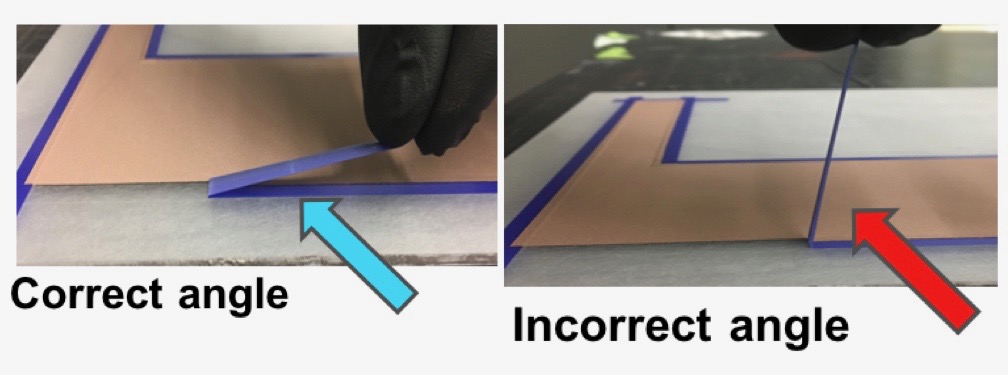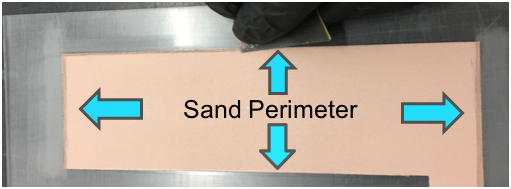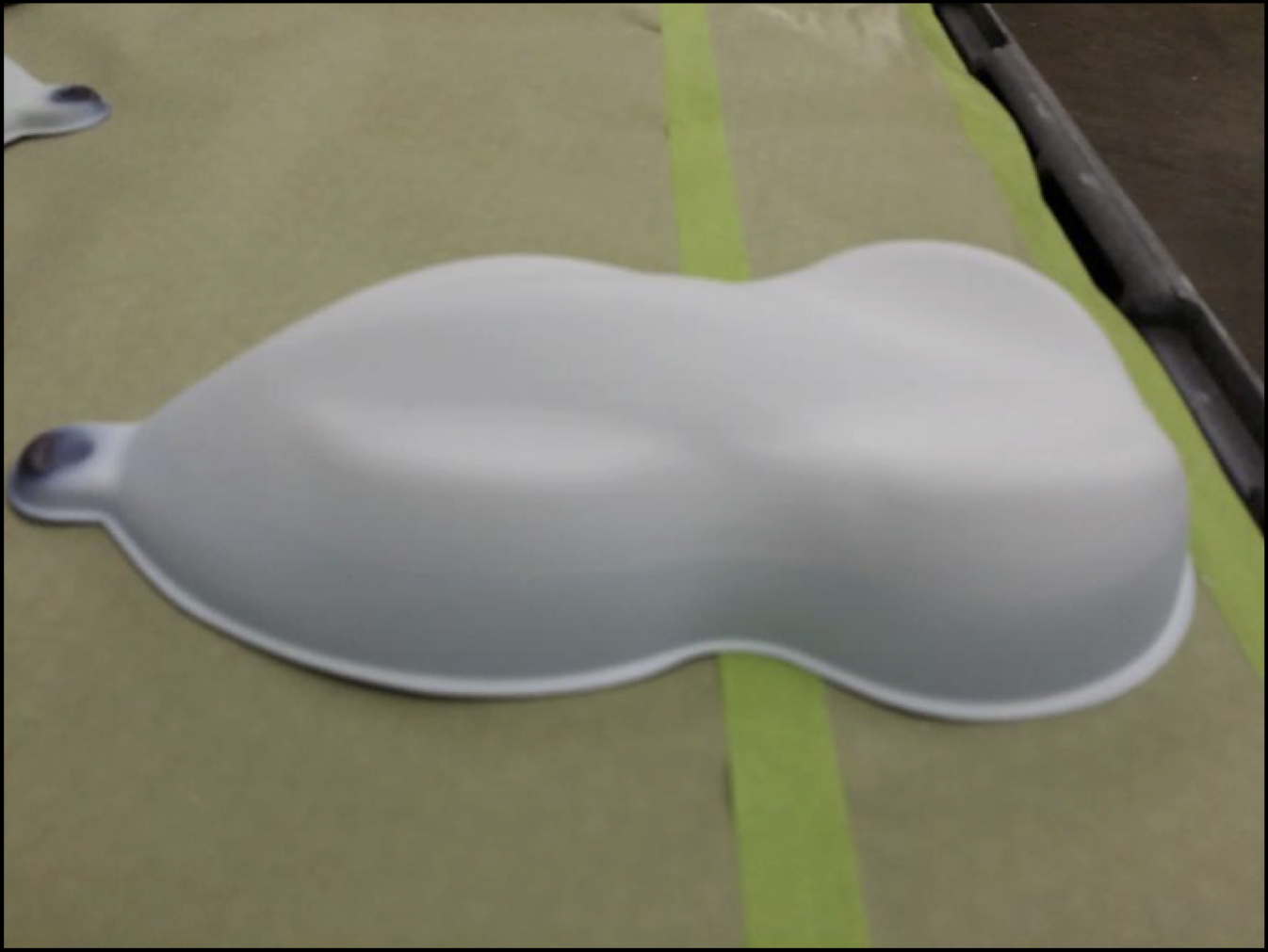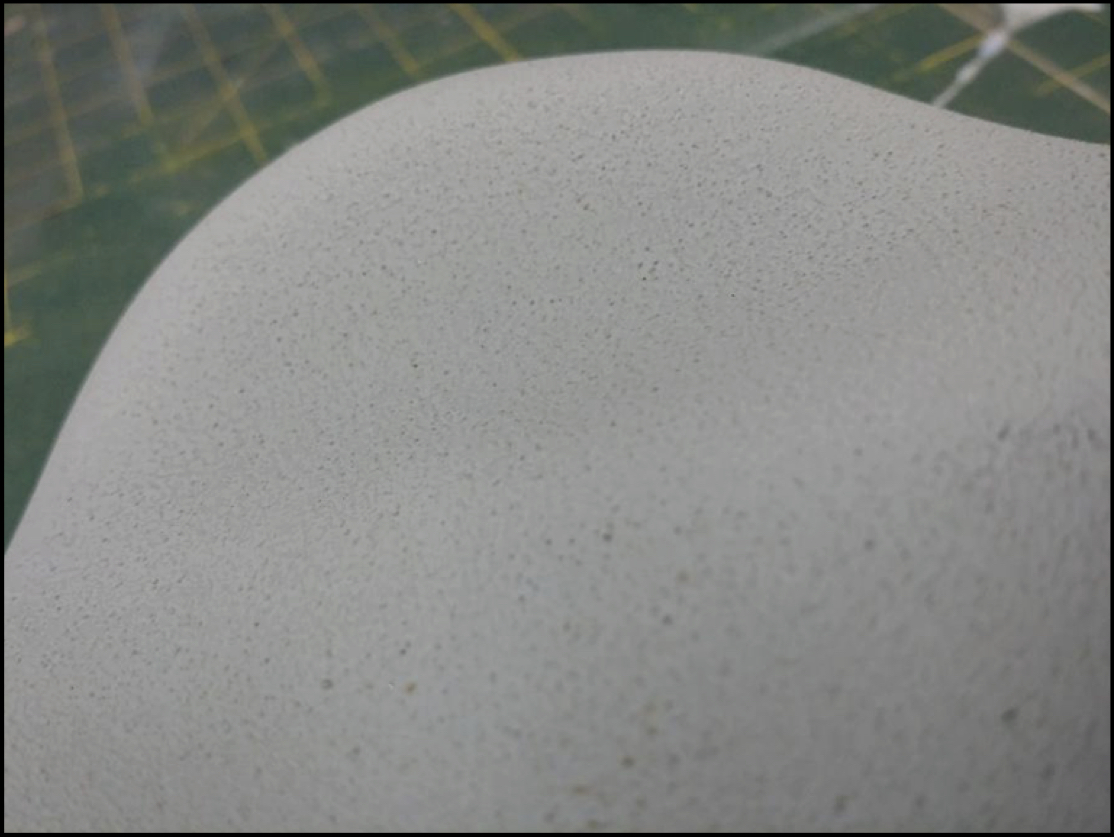Dielectric Equipment and Materials
- HVLP system with 1.3mm nozzle and PSI of 20 - 25
- Disposable cup system
- ¼" to ½" masking tape
- Filter - 120 mesh or 125 micron
- Glass or plastic stir sticks (DO NOT use wood or metal stir sticks)
- Substrate with properly masked, applied, dried, and tested backplane
Dielectric Application Key Points
Solvent based material which acts as an insulator between the conductive layers of the backplane and the Conductive Top Coat.
Dielectric is pre-mixed and ready to spray.
Assures the current is being distributed evenly across the surface to produce even light.
Cross coat - Spray with a 50% to 75% overlap to cover the entire surface and then immediately spray a second coat perpendicular to the previous coat with a 50% to 75% overlap.
Apply dielectric with a consistent layer to the entire area that will be illuminated and also to the entire area where the busbar will be located.
Dielectric material should be constantly agitated during the application process to prevent sediment from settling.
Dielectric thickness is approximately 1 mil or 25 microns
DO NOT fade Dielectric
Dielectric should be applied at a consistent layer across the entire surface. Fading dielectric near the edges may result in non-illumination of LumiLor.
Dielectric Application
Step 1 - Backplane Preparation for Dielectric
- Unmask backplane masking by pulling the tape back on itself as shown below. Do not pull directly up at a 90 degree angle from the surface as this may remove backplane material.


- Mask off the connection site using masking tape.
- Remove bleeders of conductive material with 97% isopropyl alcohol. This usually occurs where tape lines overlapped.
- IMPORTANT: Make sure to sand the backplane edges with 1000-1500 grit sandpaper.


IMPORTANT
All edges and peaks along the perimeter of the backplane will have to be sanded down, this includes any paths to connection sites. The edges and peaks are created from the paint drying up and over the tape line and when the tape is removed the edge or peak is left behind.
The LumiLor system will fail if this is not completed properly.
Step 2 - Mix and Strain
- Thoroughly shake for 1 to 2 minutes
- Mix with glass or plastic stir sticks to insure no solids are at bottom of container
- DO NOT use wood or metal stir sticks
- Shake again as needed
- Strain with 120 mesh or 125 micron filter
Step 3 - Apply First Coat
- Apply a medium to wet coat with the cross coat pattern from a distance of approximately 6" - 8".
- Insure a consistent coat over the entire surface being coated.
- Allow 5-10 minutes of flash time before next coat.
Step 4 - Apply Second Coat
- Apply second coat of dielectric in the same process as the first coat.
- Allow 5-10 minutes flash time.
- The visual appearance should be a smooth, flat, semi-gloss, glass look and should not have any pin holes, orange peel, or cracking.
- If inconsistencies appear the substrate may need to be lightly sanded with 1000 grit sandpaper to remove large particles and an extra coat of dielectric will need to be applied.
- If large particles cannot be removed with sanding then scratches developed from sanding the panel will need to be fully sanded and re-done by sanding off the dielectric, confirming the ohms reading of the backplane, then reapply the dielectric.
- The visual appearance when complete should have an egg shell tone and visually you can see the backplane area but not the copper color of the backplane. If the copper color is visible then the dielectric is too thin and another coat will need to be applied.
Dielectric Dry Time, Unused Material, and Clean-up
Wait a minimum of 15-30 minutes and a maximum of 8 - 12 hours before preparing for dielectric.
Return unused material to original container after agitated in the spray gun cup.
Clean any used containers and/or spray guns with thinners or acetone immediately after use.
Dry times will vary based on local environmental conditions.
Dielectric Visual Reference Guide
Dielectric properly applies produces a smooth finish and no rough grains

Dielectric - Grain Effect when power is off
- Cause - Backplane applied too dry (dry spray)
- To Correct This - Sand with 800 grit then reapply until proper coverage is achieved
-
To Avoid This - Sprayed too far away, move closer when applying. Or, Use correct air pressure

